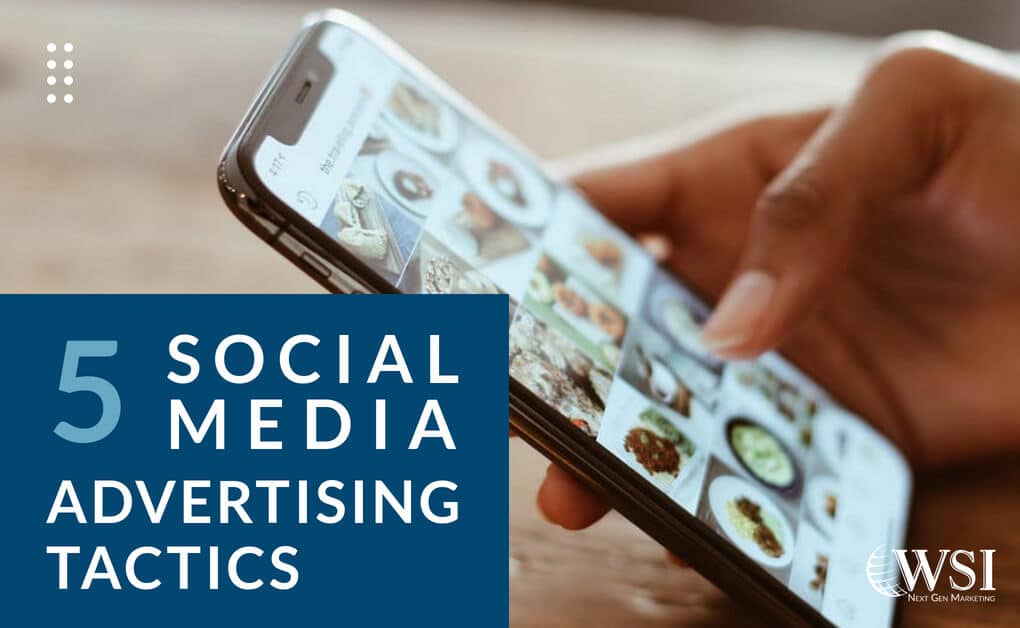In an everchanging, fast-moving world, where technology rules, businesses have to be smart, adapt quickly, and take risk. Social media advertising has been around for a while now, but for many businesses, it’s still very new and it definitely feels like a risk. But it doesn’t have to be. With a better understanding and a few strategies under your belt, you’ll be able to comfortably take on social media advertising to increase brand awareness and even sales.
While 2019 brought its own social trends that continue to be relevant today, 2020 surely has taken a turn and a little refresh in social media advertising tactics can help ensure your next campaign is a success.
1. Get Pixel Savvy
The most important aspect of advertising is tracking. Without tracking, you have no data. Without data, you have no way of improving your campaign and no way of knowing if it’s profitable. Pixels are snippets of code added to your website.
You’ve most likely heard of the Facebook Pixel, an extremely powerful tool that tracks user activity once they click your ad. Beyond that, it collects data on your website visitors. You can then take this data to create an audience of website visitors, target them directly, or target similar new people.
2. Use Custom Audiences & Lookalike Audiences to Increase Conversions
Facebook’s Custom Audience gives businesses the ability to hone in on their target audience in a million different ways. You can create a custom audience of existing website visitors as well as existing social media followers. These are people who know your brand and they’re more likely to convert.
You can also create custom audiences from customer lists. A customer list is made of “identifiers” such as emails, phone numbers, or addresses. Facebook takes this list and matches it with existing Facebook profiles. You can then either advertise to this group or you can use it to create a Lookalike Audience.
What’s a Lookalike Audience? Once Facebook has a custom audience, either from website visitors or a customer email list, it can use it to create a “model” customer – an ideal target audience persona with similar behaviors and interests as your actual customers. Facebook then can target people throughout social media that match this “ideal” persona. Creepy? Maybe. Genius? Definitely. In the end, it guarantees that people will receive ads that are relevant to them. And that’s awesome.
3. Dive into Retargeting
Retargeting or remarketing is a gold mine. You can create a custom audience of website visitors who view a specific page but don’t contact you. Then, you can serve an ad showing that specific product or service that they viewed, perhaps with a special offer. If you have an e-commerce website, you can create an audience of users who added items to their cart but never purchased the product or service. Show them an ad and perhaps offer a discount too.
This can go hand in hand with marketing automation. For users who add their email to a checkout form on your website but don’t actually complete the purchase, you can send them an email saying “hey, you left something in your cart!” Connecting with customers in these various touchpoints will help increase conversions create a loyal following.
4. Use Video Ads
As consumers, we’ve gotten really good at quickly scrolling through our feeds and digesting image content without stopping. But video forces users to stop, even if it’s for an extra 3 seconds to see what happens next. Videos have been shown to receive double the clicks of images, a 20-30% increase in conversions, and a 2-3x higher CTR.
Video can also help you target “warm” audiences and their Lookalikes. You can create a custom audience of people who have watched 5, 6, 10, 30+ seconds of your video. Then, you can retarget them or you can create a lookalike audience based on these interested users. Users who watched many seconds of your video are interested in your content and business, therefore, you’ll want to find others like them.
While not all brands can create commercial-like video ads, Facebook and other tools offer you the chance to create an animated-type video based on images.
5. Increase Budget & Optimize
We know… this part doesn’t feel great. There are a few reasons why an increased budget will help your campaigns. 1. Social media platforms use machine learning which means they require data. The more ad campaigns you run, the more people you reach, and the more data the platform will collect. This data will help the social platform find users who are likely to convert. Too little data means longer optimization times and longer positive ROI waiting period. 2. Social media advertising has gotten more popular and therefore more competitive. An increase in budget will help you compete. You don’t need to spend too much but consider reevaluating your budget to increase your chance for success. 3. A bigger budget will help you test your audiences. Want to know if a nationwide or a local audience will perform better? Or if a lookalike audience or an interest-based audience is better? Consider running a campaign to these audiences and seeing which performs best. A larger budget will be required but you can then use your findings in future campaigns with smaller budgets.
Embracing Social Media Advertising
During a time when so many businesses depend on online sales, social media advertising can be a lifesaver. It can help you target people who are already interested in your brand and therefore ensure you don’t spend money on those less likely to convert. Social media is such an integral part of our everyday lives – use it to get in front of your audience and connect with them on a deeper level.

